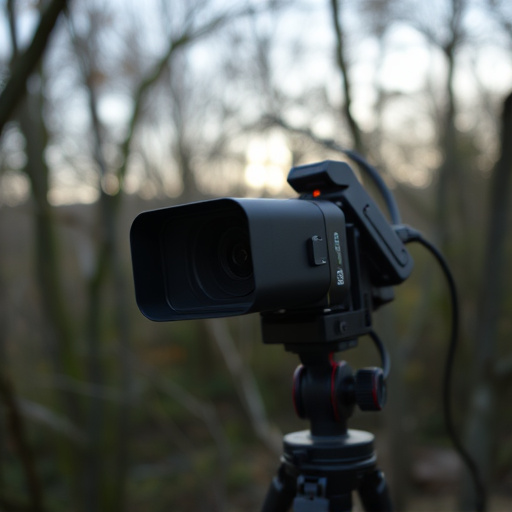Advancements in technology have led to a surge in spy equipment popularity for enhanced security. Pet Monitoring Cameras With Alerts offer remote access and real-time alerts for pet owners, integrating AI algorithms to monitor activities and detect hidden cameras. Choosing such an app requires focusing on real-time monitoring, immediate alerts, live video streaming, and advanced algorithms. However, the legal and privacy challenges associated with spy equipment detection apps must be considered, as their usage should adhere to regional data protection laws and respect individual privacy.
In an era where privacy is increasingly fragile, the rise of spy equipment, including hidden cameras, poses a significant threat. Mobile apps have emerged as a potent tool in the battle against this clandestine surveillance, offering users a way to protect their personal spaces. This article explores the detection of spy equipment, particularly focusing on mobile apps designed to identify hidden cameras. We’ll delve into the latest advancements, key features to watch for in apps like Pet Monitoring Camera With Alerts, and the legal implications surrounding their use.
- Understanding Spy Equipment and Their Rise in Popularity
- The Role of Mobile Apps in Detecting Hidden Cameras
- Features to Look For in Spy Equipment Detection Apps
- Legal Considerations and Privacy Concerns with Spy Camera Detection Apps
Understanding Spy Equipment and Their Rise in Popularity
In recent years, there’s been a surge in the popularity of spy equipment, driven largely by advancements in technology and changing societal dynamics. These devices, ranging from hidden cameras to listening devices, have become increasingly accessible and affordable, making them an attractive option for both personal and professional use. One notable example is the Pet Monitoring Camera With Alerts, which allows users to remotely observe their pets’ activities, offering peace of mind while they’re away.
The rise in spy equipment’s popularity can be attributed to several factors. For individuals, these devices provide enhanced security and surveillance for homes and businesses. They offer a sense of control and protection against potential threats, especially with the growing concern over privacy. Moreover, as technology becomes more integrated into our daily lives, many are turning to spy equipment as a way to stay ahead of potential risks, keeping an eye on sensitive areas that might otherwise be inaccessible or hard to monitor.
The Role of Mobile Apps in Detecting Hidden Cameras
In today’s digital era, mobile apps have become indispensable tools for various tasks, including pet monitoring. Among the many innovative solutions available is the Pet Monitoring Camera With Alerts, which offers users a way to keep an eye on their pets while they’re away. This app-based system typically includes hidden cameras strategically placed in homes or outdoor areas, designed to capture footage of pets’ activities. The real-time alerts and remote access features allow pet owners to monitor their animals’ well-being and behavior from anywhere, at any time.
The integration of these apps in spy equipment detection is significant due to their ability to identify hidden cameras. With advanced sensors and AI algorithms, Pet Monitoring Cameras can detect unusual activities or objects that might indicate the presence of surveillance devices. This technology empowers individuals to safeguard their privacy and security by revealing hidden cameras, whether they’re used for malicious purposes or simply as a means of monitoring.
Features to Look For in Spy Equipment Detection Apps
When choosing a spy equipment detection app, look for features that cater to real-time monitoring and immediate alerts. A robust app should offer live video streaming capabilities, allowing users to remotely access their camera feeds anytime, anywhere. This is particularly crucial in the context of pet monitoring cameras with alerts; being able to check in instantly ensures you’re responsive to any unusual activity.
Additionally, advanced algorithms that can automatically detect and differentiate between common household activities and suspicious behaviors are essential. Look for apps with low latency in alert generation, ensuring you receive notifications promptly when potential spy equipment is detected. Features like motion detection, image recognition, and AI-powered analytics enhance the app’s effectiveness in identifying hidden cameras or eavesdropping devices.
Legal Considerations and Privacy Concerns with Spy Camera Detection Apps
The rise of spy equipment detection apps, designed to identify hidden cameras and other surveillance devices, has brought to light several legal considerations and privacy concerns. While these apps offer valuable tools for individuals seeking to protect their privacy, especially with the prevalence of pet monitoring cameras with alerts, it’s essential to navigate a complex landscape of regulations. The use of such technology may be restricted or governed by data protection laws, which vary across jurisdictions. For instance, in many countries, installing hidden cameras without explicit consent is illegal, and using apps to detect these devices could inadvertently lead to privacy breaches if not used responsibly.
Privacy advocates argue that spy camera detection apps can empower users but also pose risks. They collect and process visual data, potentially including sensitive information, which raises questions about data storage, security, and user control. As these apps gain popularity, ensuring transparency in their data handling practices is crucial to maintaining trust among consumers who may already be wary of technology intruding into their personal spaces, both physical and digital.
Mobile apps have emerged as powerful tools in the fight against hidden spy equipment, offering users a way to protect their privacy. From identifying pet monitoring cameras with alerts to scanning for other covert devices, these applications provide an accessible and efficient method of detection. While legal considerations and privacy concerns must be addressed, the rise of such apps highlights the evolving digital landscape where technology both empowers and protects individuals from potential surveillance threats.
